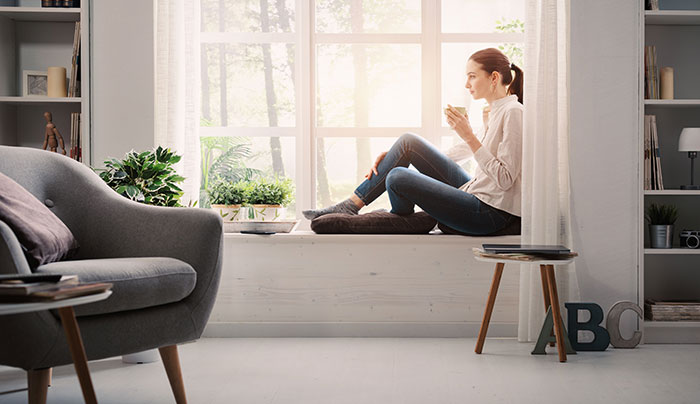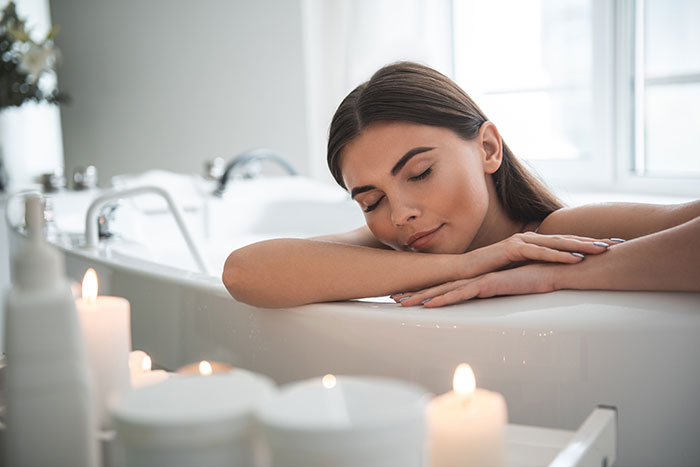How to Create the Peaceful Retreat Your Clients Really Want

© StockPhotoPro- stock.adobe.com
December 10, 2020
The Lola and Atlanta Decorative Arts Center recently co-hosted a virtual session on Serene Living: Designing a Space that Supports Calmness and Positivity into the New Year. Several Atlanta-based designers shared their input on this timely topic as more clients have a need for this type of design that supports mental health.
Giana Shorthouse of Giana Shorthouse Studio hosted this engaging discussion with three of ADAC’s designers, including Jess Davis of Atelier Davis, Jillian Rooker of Sacred Space Design Studio and Tish Mills of Tish Interior Design.
Identifying Clients’ Needs
This year especially has gotten homeowners to realize the importance of their spaces as sanctuaries that support balanced living. The designers agreed that everyone has had a chance to take inventory of their spaces to determine whether they support their lifestyles. We have all been able to identify how our surroundings affect us emotionally.
“When you go home and close the door, you want it to be your sanctuary,” said Mills.
Davis said creating this kind of environment could mean something like a spa bathroom or something simpler like using more or less color in a space. Rooker said she is always sensitive to her clients’ state of mind and tries to be more present.
“I do not want the project to be stressful for them, I want it to be fun,” she added.
 © Yakobchuk-Olena – stock.adobe.com
© Yakobchuk-Olena – stock.adobe.com
Getting over the Hump
Shorthouse moved on with the discussion by asking the panel how they would convince their clients to move forward with a project.
“If you are calling me, it’s obviously something you want to do, so go for it,” said Mills. “Don’t wait and take the steps to make you happy now.”
Davis added that because the way we all work has changed – possibly for good – now is the time to rethink your spaces for the future.
Retailer Input
Shorthouse changed tack and asked about what retailers are doing to promote wellness at home, and the feedback was varied. Davis feels like while they are latching onto the concept, they are not necessarily designing anything new around it. Mills said she didn’t know if it was really a retailer’s place to develop a concept that is outside of their strategy – that it could turn clients away. In terms of actual products, all the designer advised against cutting corners to get something faster in lieu of what you actually want.
Tips for a Full House
The panel went on to discuss how to design a space for multiple people and generations in a home.
“You need to understand everyone’s needs on almost a granular level,” said Davis. “What are they all using the spaces for? Then you can parse out what they need – down to small things like where the outlets are located. A lot comes down to functional design, and then you can strive to make it beautiful.”
Mills suggests finding out who will be in various parts of house at different times. She says lighting is a very important aspect of this concept of balanced living, and Rooker also advises to take into consideration material performance. A more durable and less-maintenance choice may be better for kids and pets.
Tips for Designing a Healthy Home in 2021
– Find out what makes your clients happy.
– Learn about what they sacrificed because they had to and how they might change that if they could.
– Think about engaging their senses and not just how things look.
– Advise them to step back from Google and Pinterest images and instead focus on what really inspired them.
– Try little things to change the energy in a space.
More News
April 26, 2024 | Business, Trends & Inspirations
Personalization Is Defining Today’s Luxury Projects
April 26, 2024 | Business
PIRCH Permanently Shuts Down, Files for Bankruptcy
April 25, 2024 | Awards & Events
2024 Coverings Installation & Design Award Winners Announced
April 24, 2024 | People
Oatey Announces New COO and CCO
April 23, 2024 | Trends & Inspirations
Sustainability Report: More Education Needed for Green K&B Design
April 2, 2024 | Sponsored
Whirlpool Corp. Brings Purposeful Innovation Home